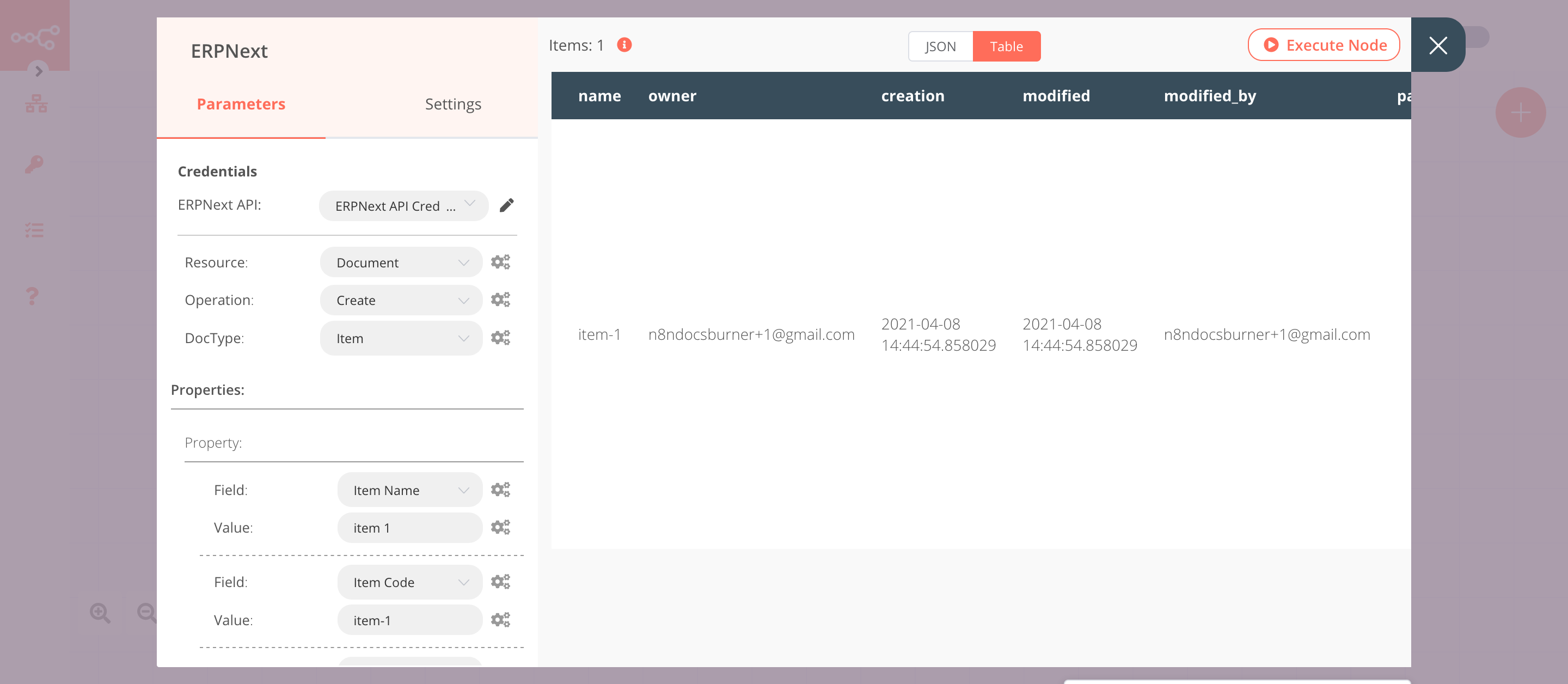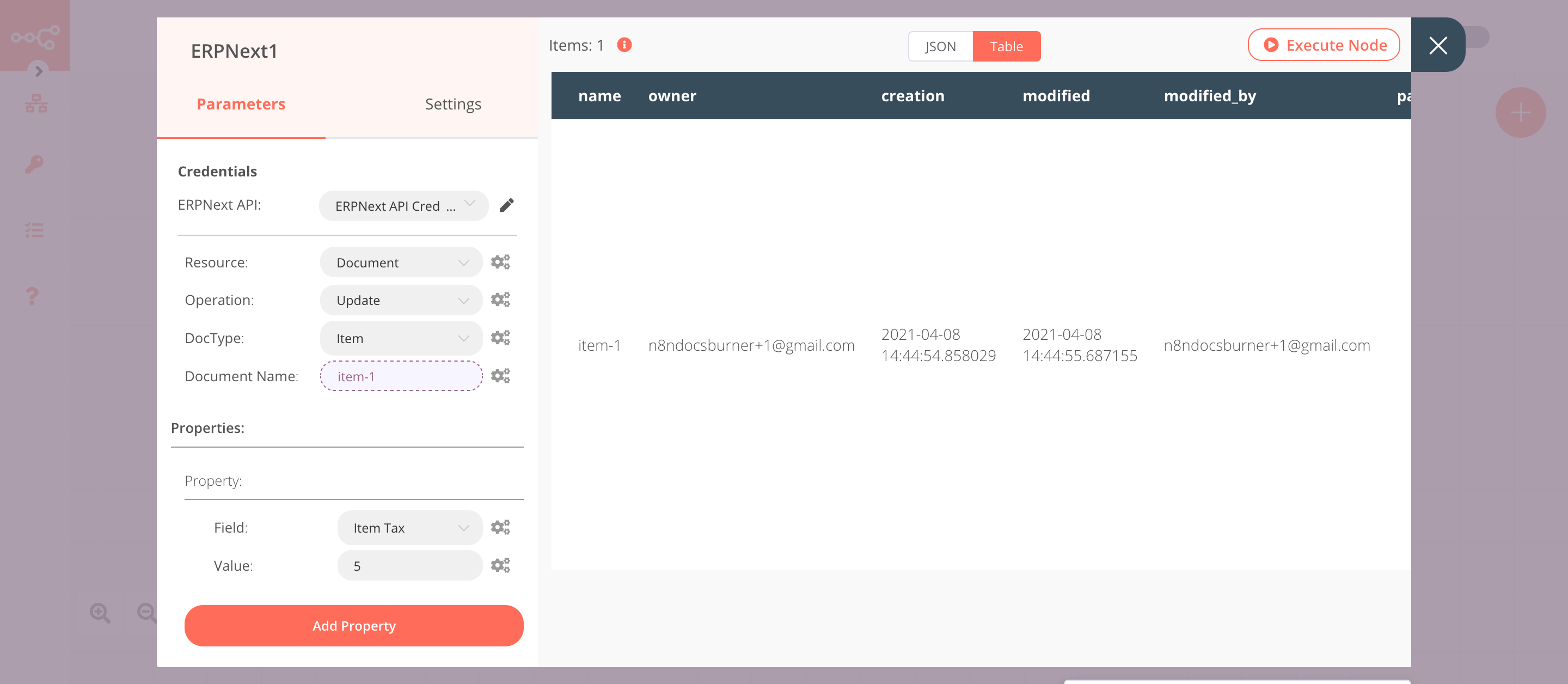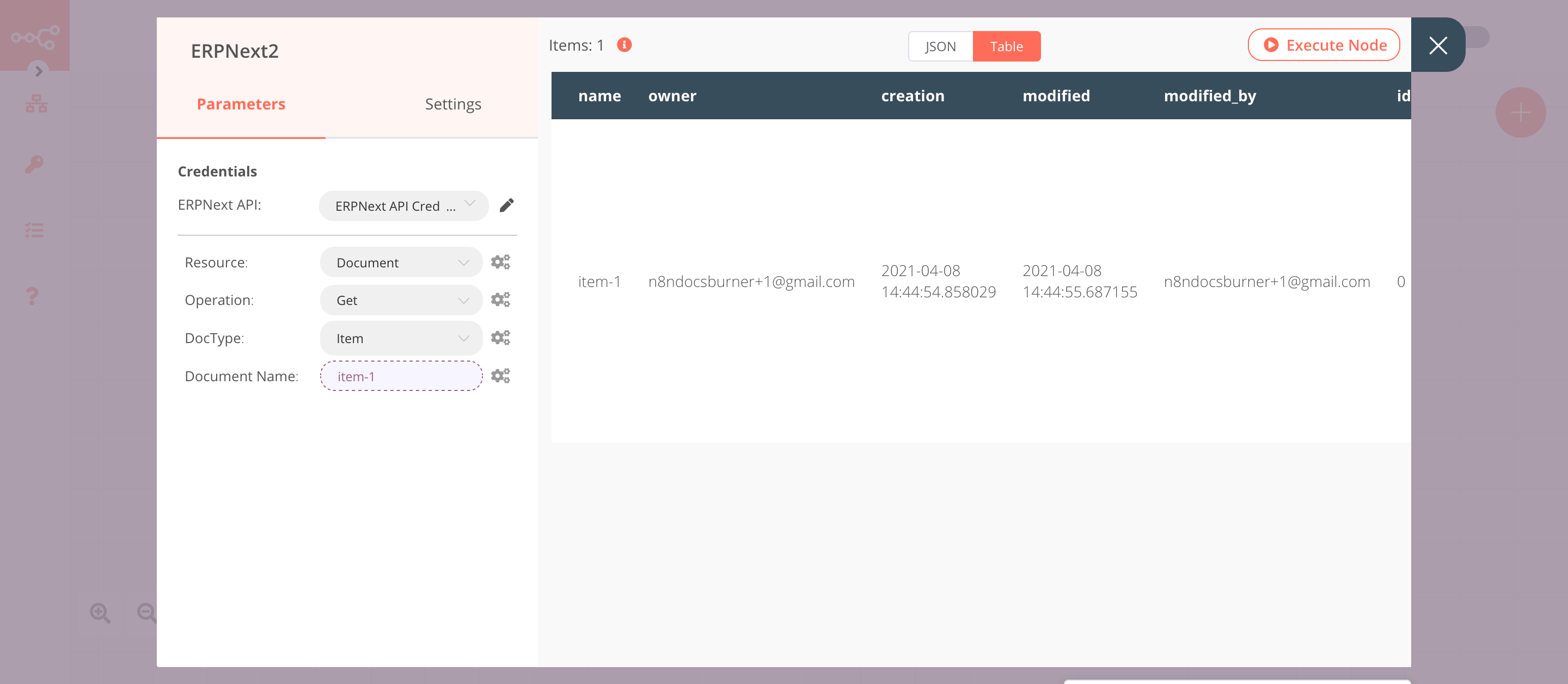ERPNext#
ERPNext is an open-source integrated Enterprise Resource Planning software. It is a generic ERP software used by manufacturers, distributors, and services companies.
Credentials
You can find authentication information for this node here.
Basic Operations#
Document - Create a document - Delete a document - Retrieve a document - Retrieve all documents - Update a document
Example Usage#
This workflow allows you to create, update, and retrieve a document from ERPNext. You can also find the workflow on n8n.io. This example usage workflow uses the following nodes. - Start - ERPNext
The final workflow should look like the following image.

1. Start node#
The Start node exists by default when you create a new workflow.
2. ERPNext node (document: create)#
This node will create a new document in ERPNext.
- First of all, you'll have to enter credentials for the ERPNext node. You can find out how to do that here.
- Select 'Item' from the DocType dropdown list.
- Click on the Add Property button.
- Select 'Item Name' from the Field dropdown list.
- Enter
item 1in the Value field. - Click on the Add Property button.
- Select 'Item Code' from the Field dropdown list.
- Enter
item-1in the Value field. - Click on the Add Property button.
- Select 'Item Group' from the Field dropdown list.
- Enter
Productsin the Value field. Note: Make sure that the item group exists in your ERPNext account. - Click on Execute Node to run the node.
In the screenshot below, you will notice that the node creates a new item with the name item 1.

3. ERPNext1 node (document: addContact)#
This node will add the Item Tax property to the item that we created in the previous node.
- Select the credentials that you entered in the previous node.
- Select 'Update' from the Operation dropdown list.
- Select 'Item' from the DocType dropdown list.
- Click on the gears icon next to the Item Name field and click on Add Expression.
- Select the following in the Variable Selector section: Current Node > Input Data > JSON > name. You can also add the following expression:
{{$json["name"]}}. - Click on the Add Property button.
- Select 'Item Tax' from the Field dropdown list.
- Enter
5in the Value field. - Click on Execute Node to run the node.
In the screenshot below, you will notice that the node adds the Item Tax property to the item that we created in the previous node.

4. ERPNext2 node (document: get)#
This node will get the information about the item that we created earlier.
- Select the credentials that you entered in the previous node.
- Select 'Get' from the Operation dropdown list.
- Select 'Item' from the DocType dropdown list.
- Click on the gears icon next to the Item Name field and click on Add Expression.
- Select the following in the Variable Selector section: Current Node > Input Data > JSON > name. You can also add the following expression:
{{$json["name"]}}. - Click on Execute Node to run the node.
In the screenshot below, you will notice that the node returns the information of the item.
